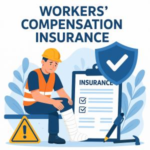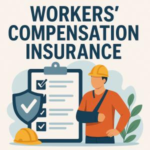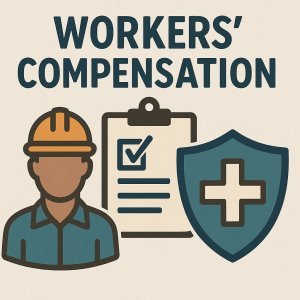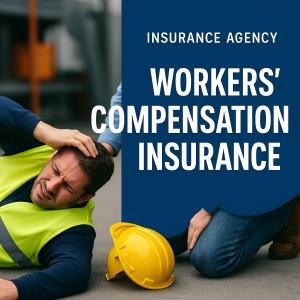
High-Risk Security Guard Operations: Winning Strategies for Workers’ Comp Approval
August 27, 2025
In-Home Care Service Workers’ Comp Insurance: Essentials for New Agencies
August 27, 2025In the demanding field of security services, safety remains a paramount concern for both employers and their security personnel. In Georgia,security guards face a unique set of occupational hazards that can lead to injuries,affecting not only their well-being but also the operational integrity and financial health of security firms. Understanding the most common injuries encountered on the job and implementing effective prevention strategies is essential for minimizing risk and reducing the potential for costly claims. This article explores seven prevalent security guard injuries in Georgia and offers actionable insights on how organizations can proactively safeguard their workforce and mitigate liability.
Table of Contents
- Common Workplace Hazards Impacting Security guards in Georgia
- Analyzing Injury Patterns and Their Financial Implications on Employers
- Implementing Preventative Training Programs to mitigate injury Risks
- Leveraging Technology and Safety Protocols to Reduce Claim Incidents
- Q&A
- In Summary
Common Workplace Hazards Impacting Security Guards in Georgia
Security guards in Georgia face a variety of workplace hazards that can lead to importent injuries and subsequent claims. Among the most prevalent risks are slips,trips,and falls that often occur due to uneven surfaces,poor lighting,or wet floors.Additionally, guards frequently confront violent encounters which may arise during confrontations with trespassers or in the process of crowd control. These altercations can result in bruises, fractures, or even more serious trauma. Environmental factors such as extreme weather conditions or exposure to hazardous materials further compound these dangers, emphasizing the need for extensive safety protocols and protective equipment.
Another notable threat is ergonomic strain from prolonged standing or carrying heavy equipment, which can cause musculoskeletal injuries over time. Guards are also at risk of vehicle-related accidents when patrolling large areas or controlling traffic. Understanding these hazards allows employers to implement targeted strategies to reduce injury rates, including:
- Regular safety training tailored to real-world scenarios
- Proper use of personal protective gear
- Routine environmental inspections to eliminate hazards
- Encouraging reporting and early intervention on minor injuries
Analyzing Injury Patterns and Their Financial Implications on employers
Security guards in Georgia frequently encounter injuries that not only compromise their well-being but also impose substantial financial burdens on their employers. Common injury patterns-such as slips, falls, musculoskeletal strains, and assault-related wounds-often lead to extended medical absences and increased workers’ compensation claims. These incidents result in significant costs including medical expenses, wage replacement, and potential litigation fees, which can cumulatively strain company resources and affect operational efficiency.
Understanding these injury trends allows employers to strategically allocate resources toward targeted prevention efforts. Key areas for focus include:
- Enhanced training programs to improve situational awareness and proper body mechanics.
- Investment in safety equipment such as slip-resistant footwear and protective gear.
- Implementation of clear protocols for managing violent encounters or emergency situations.
| Injury type | Frequency | Average Cost per Claim |
|---|---|---|
| Slips and Falls | High | $12,500 |
| Muscle Strains | Medium | $8,700 |
| Assault Injuries | Low | $15,000 |
By proactively addressing these patterns, employers not only minimize financial impacts but also foster a safer work surroundings, enhancing guard retention and reputation within the security industry.
Implementing Preventative Training Programs to Mitigate Injury Risks
Organizations that prioritize the safety of their security personnel create an environment that significantly reduces the likelihood of workplace injuries. A well-structured training regimen focusing on situational awareness, proper use of equipment, and physical fitness is essential. Incorporating hands-on drills that simulate real-world scenarios allows guards to develop critical decision-making skills under pressure.Key components often include de-escalation techniques, proper body mechanics to avoid musculoskeletal injuries, and safe restraint methods to prevent harm during confrontations.
To maintain effectiveness,preventative training programs should be reviewed and updated regularly,aligning with the latest industry standards and emerging threats. Employers can also implement tracking systems to monitor compliance and identify areas where additional training might potentially be necessary. Below is a simplified overview of crucial training focus areas and their impact on injury risk mitigation:
| Training focus | Injury Risk Reduced | Expected Outcome |
|---|---|---|
| Ergonomics & Body Mechanics | musculoskeletal, Overexertion | Lower incidence of strains and sprains |
| Conflict Resolution Techniques | Assaults, Physical Altercations | Fewer violent encounters and claims |
| Equipment Handling | Falls, Impact Injuries | Reduced accidents during patrols |
Leveraging Technology and Safety Protocols to Reduce Claim Incidents
Implementing cutting-edge technology alongside stringent safety protocols significantly mitigates the risks security guards face on the job. Tools such as body cameras, GPS tracking devices, and mobile panic buttons not only enhance real-time dialog but also act as deterrents against potential threats. These innovations enable rapid response to incidents, ensuring guards receive immediate assistance when needed. Additionally,integrating digital training modules focused on situational awareness and emergency preparedness ensures that guards are consistently updated with best practices tailored to evolving security needs.
Beyond technology, fostering a culture of safety adherence through comprehensive procedural guidelines remains crucial. Regular risk assessments and documented checklists help identify hazards before they escalate into claims. to illustrate, here’s a quick overview of essential safety practices:
| Safety Protocol | Purpose | Benefit |
|---|---|---|
| Routine Equipment Inspections | Ensure all gear functions optimally | Prevents malfunctions during critical moments |
| Scheduled Breaks | Reduce fatigue and maintain alertness | Minimizes risk of human error |
| Incident Reporting Systems | Streamline documentation and response | Facilitates claim accuracy and prevention |
Q&A
Q&A: Seven Common Security Guard Injuries in Georgia and How to Prevent Claims
Q1: What are some of the most common injuries sustained by security guards in Georgia?
A1: Security guards in Georgia frequently experience injuries such as slips and falls, musculoskeletal strains, cuts and lacerations, assault-related trauma, repetitive stress injuries, heat-related illnesses, and vehicle-related accidents during patrols.
Q2: Why are slips and falls a prevalent injury among security personnel?
A2: Slips and falls frequently enough occur due to hazardous environments such as wet floors, uneven surfaces, poor lighting, or cluttered work areas. Security guards are often on their feet for extended periods and must navigate various premises, increasing the risk.
Q3: How can employers reduce the risk of musculoskeletal injuries for security guards?
A3: Employers can implement ergonomic training, encourage proper lifting techniques, provide appropriate equipment such as supportive footwear, and schedule regular breaks to minimize strain from prolonged standing or repetitive motions.
Q4: What measures can be taken to prevent assault-related injuries in the security field?
A4: Proper training in conflict de-escalation, situational awareness, and self-defense, along with adequate staffing and communication tools, can reduce the likelihood of assaults leading to injuries.
Q5: How do heat-related illnesses affect security guards, and what precautions are recommended?
A5: Guards working outdoors in Georgia’s hot climate are at risk of heat exhaustion or heat stroke. Employers should enforce hydration policies, provide shaded rest areas, schedule frequent breaks, and monitor weather conditions closely.
Q6: What role do vehicle safety protocols play in minimizing patrol-related injuries?
A6: Ensuring that security personnel receive defensive driving training, adhere to speed limits, conduct regular vehicle maintenance, and follow established patrol routes can significantly lower the incidence of vehicle accidents.
Q7: how does proactive injury prevention reduce workers’ compensation claims for security companies?
A7: Proactive prevention minimizes workplace injuries, thereby reducing medical costs and lost work time. Additionally, it improves employee morale and ensures compliance with regulatory standards, ultimately lowering the frequency and severity of workers’ compensation claims in the security industry.
In Summary
understanding the seven common security guard injuries prevalent in Georgia is essential for both employers and security personnel striving to maintain a safe working environment. By implementing comprehensive safety training, adhering to industry best practices, and fostering a proactive culture of risk awareness, organizations can significantly reduce the occurrence of these injuries and minimize costly claims. Prioritizing prevention not only protects the well-being of security guards but also strengthens operational efficiency and enhances overall organizational resilience. Investing in safety today ensures a more secure and enduring future for all stakeholders involved.
“This content was generated with the assistance of artificial intelligence. While we strive for accuracy, AI-generated content may not always reflect the most current information or professional advice. Users are encouraged to independently verify critical information and, where appropriate, consult with qualified professionals, lawyers, state statutes and regulations & NCCI rules & manuals before making decisions based on this content.







